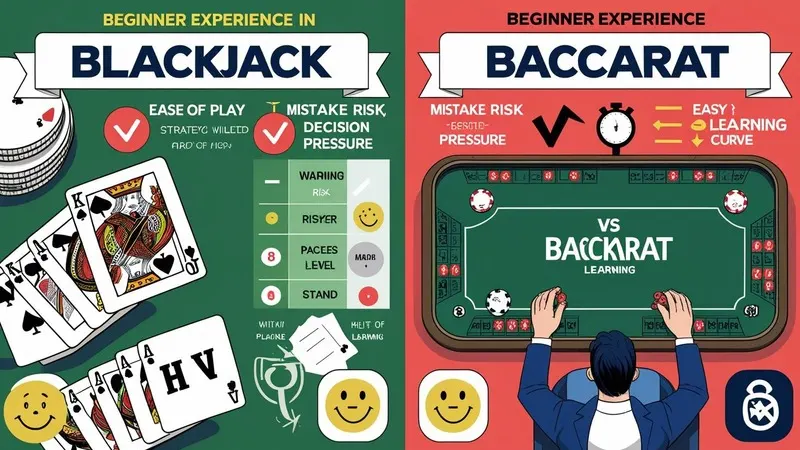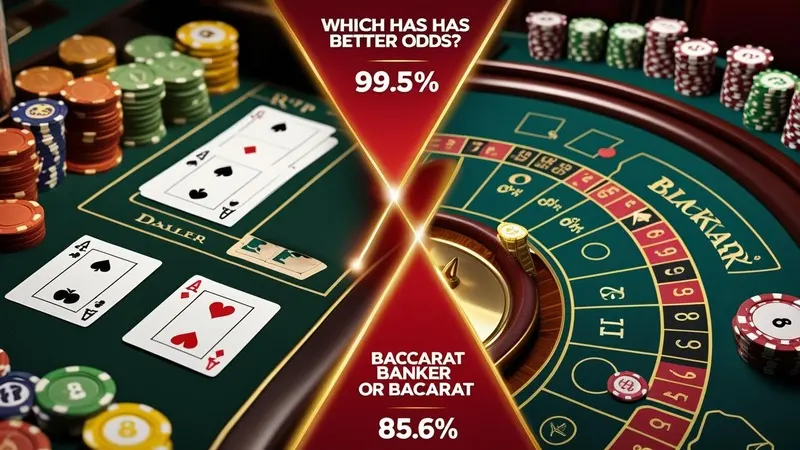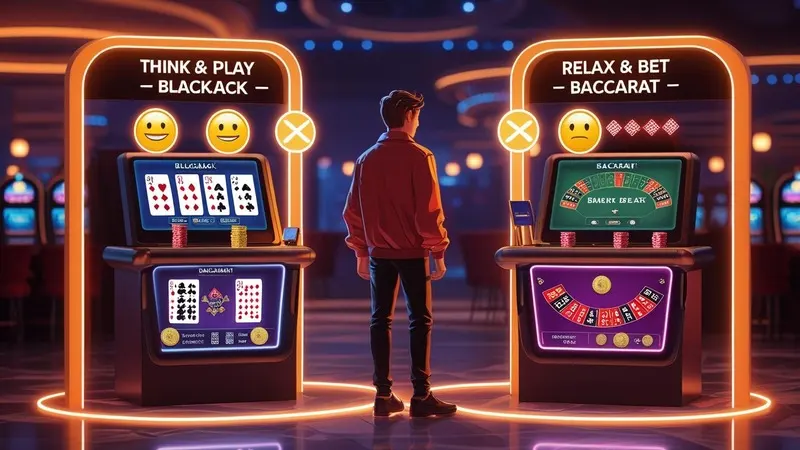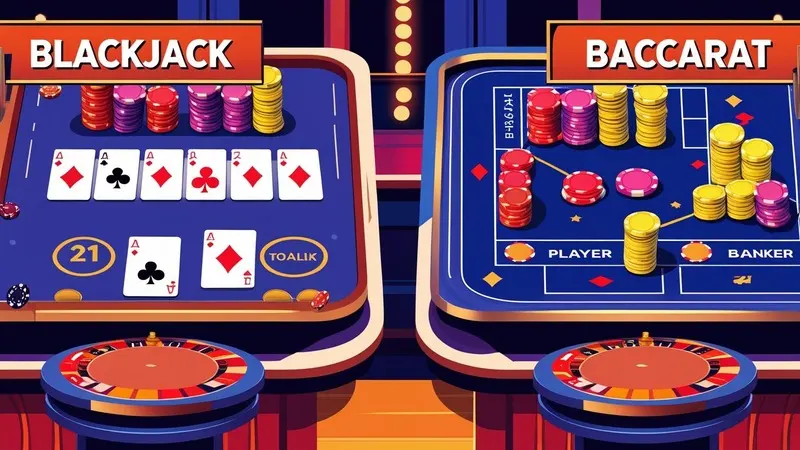When you step into the vibrant world of casinos, two names often come up first: Blackjack and Baccarat. But for beginners with little or no experience, which game offers a smoother, less stressful entry point?
Both games are staples in any casino—online or offline—and each has its unique appeal. Blackjack is known for rewarding strategic thinking, quick decision-making, and a solid understanding of probabilities. It’s the go-to game for players who enjoy having control over the outcome through calculated choices.
On the other hand, Baccarat stands out for its simplicity and reliance on luck. With straightforward rules and minimal player decisions, it’s often recommended for those who prefer a more relaxed gaming experience without needing to memorize strategies. At 91 Club, both games are featured prominently and attract thousands of players daily, from first-timers to seasoned pros.
1. Basic Gameplay Rules
This article aims to help new players decide which game suits them best. We’ll compare Blackjack and Baccarat across four essential criteria: game rules, RTP (Return to Player) and house edge, required strategy and skills, and overall player experience. Let’s break down the key differences and see which game is the better fit for you.
1.1 Blackjack
The goal of Blackjack is simple but challenging: beat the dealer by getting as close to 21 as possible—without going over. Each player receives two cards and can choose from several actions such as “hit” (take another card), “stand” (keep current hand), “split” (divide a pair into two hands), or “double down” (double the bet and take one final card). Blackjack is dynamic because players make active decisions that impact the outcome of each round.

Card values are straightforward: numbered cards are worth their face value, face cards (J, Q, K) count as 10, and the Ace can be either 1 or 11, depending on the hand. A strong understanding of card values and when to make specific moves is crucial for long-term success.
1.2 Baccarat
In contrast, Baccarat is far more passive for the player. The objective is to bet on the hand—either the Player, the Banker, or a Tie—that will have a total closest to 9. After placing a bet, the game plays out automatically based on fixed drawing rules.
Cards from 2 to 9 keep their face value, 10s and face cards count as 0, and Aces count as 1. Hands totaling more than 9 drop the first digit (e.g., 13 becomes 3). Players do not decide whether to draw a card; the game follows a set of strict rules for when additional cards are drawn.
While Blackjack gives players more control, it also demands knowledge and decision-making. Baccarat, by contrast, is easier to understand and play. Thanks to its automatic card-drawing rules, new players can enjoy Baccarat without feeling overwhelmed. For those looking for a stress-free start, Baccarat is often the better entry point.
2. RTP and House Edge: Who Gives You Better Odds?
However, achieving this RTP isn’t automatic. It requires consistent application of basic strategy, understanding card values, and avoiding common pitfalls—especially in games with slightly tweaked rules that favor the house.
2.1 Baccarat
Baccarat, while simpler, also offers solid odds—especially when you stick to the right bets. The Banker bet has an impressive RTP of 98.94%, while the Player bet isn’t far behind at 98.76%. These numbers make Baccarat one of the best choices for casual players who want decent odds without learning complicated strategies. However, the Tie bet is a trap for beginners: with an RTP of only 85.6% and a house edge of 14.4%, it’s statistically the worst bet on the table.

2.2 Blackjack
Blackjack is renowned for offering some of the best odds in the casino when played with optimal strategy. Its Return to Player (RTP) can reach approximately 99.5% if the player follows the basic strategy correctly. This means the house edge—the casino’s advantage—can be as low as 0.5%, though it may increase up to 2% depending on specific game variants and rules such as the number of decks used or dealer behavior.
If you’re willing to study and play with precision, Blackjack offers a higher payout potential over time. But if you’re new and prefer a simpler, statistically safe bet, sticking with the Banker in Baccarat is your best option. It’s a great balance between low risk and minimal effort.
📊 Tip: Visual learners may benefit from a simple comparison chart showing RTP and house edge for each option.
3. Strategy and Skill Requirements
3.1 Blackjack
Blackjack is often seen as the thinking person’s game. To play well, beginners must learn and apply basic strategy, a chart that tells you the best possible move (hit, stand, split, double down) based on your cards and the dealer’s upcard. This strategy is mathematically proven to minimize losses and maximize RTP.
For advanced players, card counting is a powerful—but controversial—technique used in live games to track high and low cards remaining in the deck. However, this strategy is virtually ineffective in online games due to automatic reshuffling.
While the game rewards practice, the learning curve can be steep. A few wrong decisions can turn favorable odds against you, especially under pressure.

3.2 Baccarat
By contrast, Baccarat is refreshingly low-pressure. You’re not required to make any in-game decisions about drawing cards. The dealer (or software) handles the entire process according to strict rules. The only decision you make is where to place your bet: Banker, Player, or Tie.
Some players use betting systems like Martingale or Fibonacci to chase wins, but these don’t improve long-term odds and come with significant financial risk.
For those who enjoy mastering a game and improving through skill, Blackjack is the clear winner. But for beginners or casual players, Baccarat’s simplicity and lack of decision-making make it far less stressful. There’s no strategy to memorize—just bet and watch.
4. Real-World Experience for Beginners
| Aspect | Blackjack | Baccarat |
| Ease of Play | Multiple decisions each round (hit, stand, split, insurance), which can overwhelm beginners | Simple betting only, no decisions during play, very beginner-friendly |
| Learning Curve | Requires memorizing rules and strategies; mistakes common without solid understanding | Fixed rules, easy to learn; most players grasp it within a few rounds |
| Player Decisions | Many choices per hand, creating pressure and stress | No in-game decisions, player only places bets |
| Risk of Mistakes | High if relying on intuition, leading to costly errors | Very low; minimal skill required |
| Game Pace | Slower pace due to decision-making | Fast and smooth; great for casual, relaxed play |
| Social Interaction | Can be intimidating with experienced players or time pressure | Less interaction, no skill pressure, more relaxed atmosphere |
| Suitability for Beginners | Best for those willing to learn and analyze, enjoy challenges | Ideal for beginners seeking simplicity and low pressure |
| Overall Experience | Engaging but demanding focus and strategy | Relaxing, easy to play, minimal thinking required |
Both Blackjack and Baccarat offer unique experiences tailored to different types of players. Blackjack rewards those who enjoy strategic thinking and analysis, providing a higher potential return when the basic strategy is mastered. However, it requires focus, quick decision-making, and a good understanding of the rules, which can be challenging for beginners.
On the other hand, Baccarat is much simpler and more accessible, making it an excellent choice for newcomers or those who prefer a low-pressure, fast-paced game. With minimal decisions required and relatively safe betting options—especially on the Banker—Baccarat allows players to enjoy the excitement of casino gaming without the stress of complex strategies.

